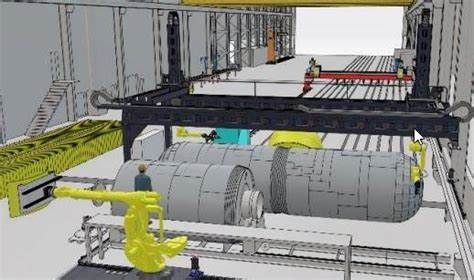Provaris Energy has engaged DNV for the review and approval of its H2Neo carrier’s proprietary hydrogen cargo containment system.

Prototype tank construction and testing remains on track to commence in Q1 CY2024 with completion expected by the end of Q2 CY2024.
Additional parties involved in the work program located in Norway include Prodtex for construction and SINTEF for prototype testing and reporting.
Construction will include the use of two laser welding robots, one material handling robot, and a scalable, custom hydraulic jig that will be employed during construction. The tank is a multilayered 2.5m diameter tank and is 9m in length with a capacity to store 800kg of hydrogen using the design pressure of 250 barg.
Together with Prodtex, planning is underway to confirm construction time and costs for 1-tonne capacity tanks based on the prototype tank design and using the proprietary design of a multi-layered carbon steel tank with liner.
The prototype tank design combined with the automated construction process will enable Provaris to scale tanks up from 1-tonne capacity to the full-scale tanks required for its H2Neo carrier ship design. The company says a production cell located in Norway, using robotic laser welding, can achieve significant cost benefits through a reduction in energy and labor content, achieve rigorous quality assurance, safety and regulatory standards, and reduce the CO2 footprint when compared to manufacturing alternatives in Asia.
Provaris has received numerous inbound enquiries over the past two years about the potential to supply small-scale hydrogen storage tanks using its proprietary carbon steel containment tank design. Typically, the requirement has been for industrial applications at a scale of 1-5 tonnes of hydrogen capacity.
Suitable industry applications include marine bunkering and onboard storage tanks for new or modified ships implementing compressed hydrogen as the fuel source. Discussions are under way with ship designers and owners seeking alternatives to carbon fiber type 4 tanks stacked in containerized solutions. An example of a large addressable market includes bulk-storage at hydrogen refueling stations that require a minimum daily capacity of 1-tonne of storage as specified by the recent Alternative Fuels Infrastructure Regulation (AFIR) legislation passed by the European Union in September 2023. The EU has identified 657 HRSs sites to be deployed across the 27 member states by 2027, meaning deployment must start in 2025.
Provaris’ Chief Technical Executive Officer, Per Roed, commented: “We continue to see an increasing demand for safe and cost-effective solutions to store and transport gaseous compressed hydrogen, and to be able to validate our proprietary solution through prototype testing can be a game changer to unlocking a significant market opportunity. Our focus has been to establish a strong team of contributors and partners on this journey, and the engagement of DNV will further strengthen the N2Neo Class approval.”
DNV’s Global Business Director Gas Carriers, Martin Cartwright, added: “Transporting hydrogen securely and efficiently is going to be one of the linchpins of the energy transition. To make sure that this market can really take off, we need to draw on the lessons we have learned from other fuels and build from a sound technical foundation. This is why we are very pleased to be working with Provaris, bringing DNV’s experience, expertise, and cooperative spirit to help them deliver this innovative concept.”
The H2Neo carrier received FEED design approval in December 2022, with final approval for construction subject to the completion of a prototype of the proprietary containment tank design being constructed and tested to the satisfaction of class requirements.


